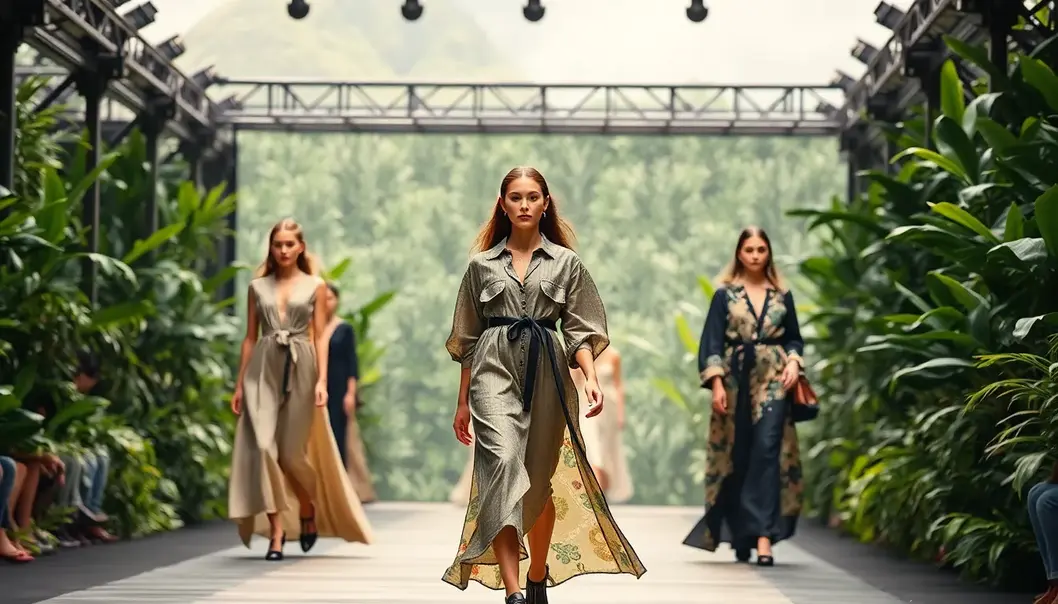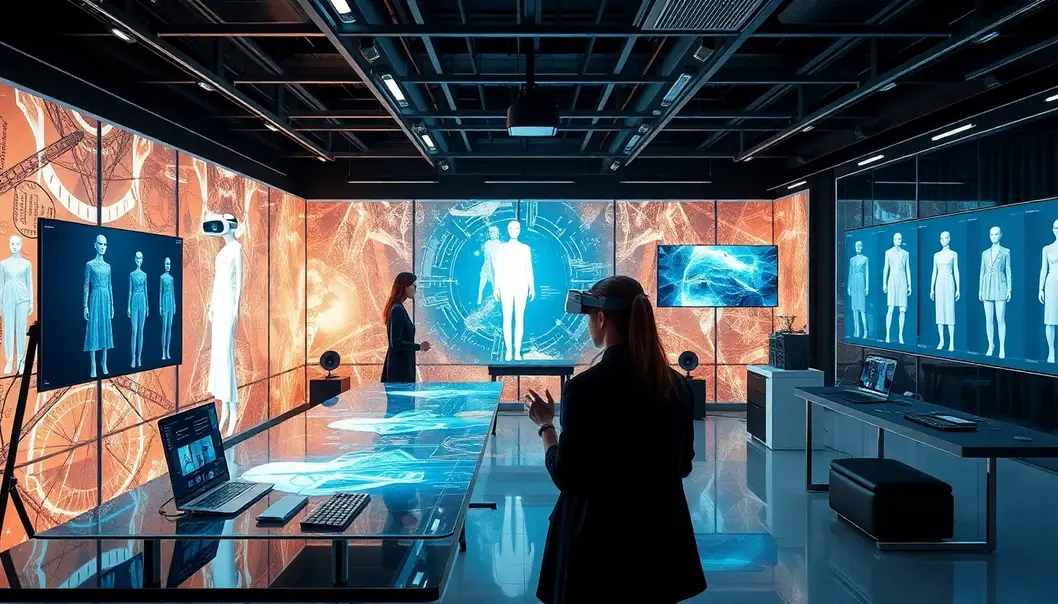Fashion in 2025 promises a thrilling exploration of creativity, sustainability, and digital innovation. This year marks a significant shift as designers delve into uncharted realms, pushing the boundaries of what fashion can mean in our fast-evolving world. The fusion of technology with environmentally conscious practices emerges at the forefront, offering a glimpse into a future where style doesn’t compromise the planet. With sustainability becoming non-negotiable, and digital artistry redefining aesthetics, fashion lovers and trend analysts are poised for a transformative journey. In this article, we dissect the key trends set to dominate 2025, inviting you to explore the avant-garde vision leading this fashion revolution.
Sustainable Innovations Transforming Fashion

By 2025, sustainability in fashion has evolved from a mere trend to a foundational ethos influencing every aspect of garment creation. Brands are actively weaving eco-friendly materials and circular fashion models into their production processes, aiming to respect both the environment and societal standards. This commitment to sustainability is reflected in the burgeoning adoption of biodegradable fabrics, which decompose naturally and reduce ecological footprints. Such materials include plant-based leathers and innovative textiles derived from recycled plastics, showcasing a shift towards more conscious consumption.
Zero-waste design practices are also gaining traction among designers, ensuring every scrap of material is repurposed or reintegrated into the fashion cycle. By doing so, these designers are not only minimizing waste but also redefining creativity, challenging traditional notions of garment construction, and setting new benchmarks for efficiency and innovation.
Leading designers and companies are pioneering these changes, using technology to drive sustainability further. For instance, advanced digital pattern-making software helps minimize waste by optimizing fabric use before cutting. Additionally, smart manufacturing processes incorporate real-time tracking systems that monitor and reduce resource consumption, enhancing efficiency across supply chains.
The impact of these sustainable efforts extends beyond environmental benefits. Brands adopting eco-focused practices are cultivating stronger relationships with consumers who are increasingly prioritizing ethical and sustainable choices. This shift encourages transparency and accountability, fostering a culture of responsibility that resonates with the modern consumer ethos.
Several visionary brands stand at the forefront of this sustainable revolution, redefining the fashion landscape with their commitment to ecologically sound practices. By eliminating single-use plastics and advocating for renewable energy in production facilities, they’re setting industry-wide precedents for responsible manufacturing. These pioneers are more than just trendsetters; they are the architects of a sustainable future in fashion, paving the way for others to follow suit in creating garments that honor our planet and its finite resources.
In this transformative voyage, fashion is not only about aesthetics but also about its resonant impact on our world. The integration of sustainable practices signals a conscious evolution, where every stitch and fiber signifies a step towards a more balanced and harmonious existence, aligning seamlessly with the digital advancements on the horizon.
Digital Couture: The Future of Fashion Design

As we stand on the brink of a fashion revolution in 2025, digital couture emerges as a beacon of innovation that fuses technology and design into an art form. This forward-thinking approach is redefining how garments are conceived, presented, and interpreted, forging a path towards creativity with sustainability in mind. By integrating 3D technology into the design process, fashion designers can explore an environment free from the constraints of traditional materials. This allows for experimentation with shapes, textures, and patterns that might otherwise be prohibitively expensive or complex to produce physically. The result is a boundless playground for creativity, where the only limit is the imagination.
In this new realm, virtual reality (VR) and augmented reality (AR) are not merely adjunct technologies; they are transformative tools that are redefining the fashion experience. Fashion shows have transcended the limitations of physical runways, embracing digital landscapes that blend the fantastical with the real. Attendees can virtually ‘attend’ shows from anywhere in the world, surrounded by immersive presentations that surpass anything a traditional setting could achieve.
Moreover, these technologies are equally transformative in the realm of personal shopping. Imagine trying on clothes from the comfort of your home, aided by AR overlays that show how a piece fits and moves with your body. This personalized shopping experience reduces the necessity for returns and ultimately minimizes waste, marrying convenience with environmental consciousness. Such advancements foster a deeper connection between consumer and creator, allowing for bespoke fashion experiences that are tailored to individual aesthetics without the associated carbon footprint.
The most avant-garde expression of digital couture lies in garments designed to exist solely in cyberspace. As consumers increasingly inhabit digital spaces—be it through social media, online gaming, or virtual worlds—there’s a burgeoning demand for digital fashion that adorns avatars rather than physical bodies. These digital garments not only serve as a status symbol in virtual communities but also eliminate the environmental impact associated with traditional clothing production and disposal.
This technological integration in fashion does not merely stay in the realm of fantasy; it bridges artistic expression with practical application, advancing sustainable practices established through previous innovations. Designers can upload their 3D creations into digital marketplaces, where they can be experienced and sold as both digital assets and physical products manufactured on-demand. This ensures a zero-waste approach where materials are used only when there is a guaranteed demand.
As digital couture continues to evolve, it presents an opportunity for the fashion industry to reimagine its relationship with the environment, creativity, and consumer engagement. It’s a future where digital and physical realms coexist harmoniously, forging a new frontier of fashion characterized by innovation, sustainability, and artistic freedom.
Final words
As we transition into 2025, the fusion of sustainability and technology in fashion is not just inspiring but essential. With eco-conscious designs and digital innovations leading the charge, the industry is poised for both environmental and creative breakthroughs. This symbiosis pushes fashion into unprecedented territories where the impossible becomes achievable. By embracing these trends, not only do we redefine aesthetics but also champion a more sustainable future. Fashion lovers and creatives, it’s your time to explore, innovate, and redefine style in ways previously unimaginable.
Discover more about how you can stay ahead in the fashion curve by visiting our trend analysis tools today.
Learn more: https://www.fashiontrendanalysis.com/tools
About us
Fashion Trend Analysis Co. offers cutting-edge tools and insights for fashion enthusiasts, helping them anticipate and adapt to upcoming trends. With deep dive analyses and digital resources, we empower you to innovate and excel in the ever-evolving fashion industry.

